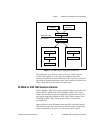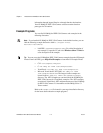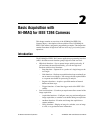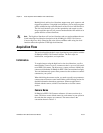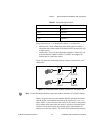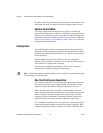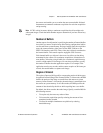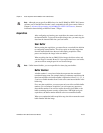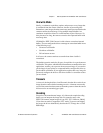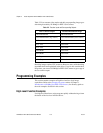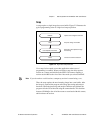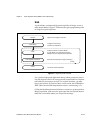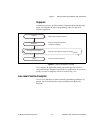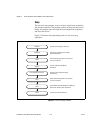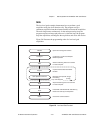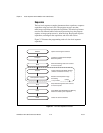Chapter 2 Basic Acquisition with NI-IMAQ for IEEE 1394 Cameras
© National Instruments Corporation 2-7 NI-IMAQ for IEEE 1394 Cameras User Manual
Overwrite Mode
Ideally, a continuous acquisition acquires and processes every image that
is transferred from the camera. However, because of processing time
fluctuations, some images from the camera may not be processed before the
camera transfers the next image. Using multiple internal buffers in a
continuous acquisition allows for a small amount of jitter. However, if a
delay becomes too long, the camera overwrites the requested buffer with
new image data.
NI-IMAQ for IEEE 1394 Cameras is able to detect overwritten internal
buffers. You can configure the driver to manage an overwritten buffer in one
of the following ways:
• Get newest valid buffer
• Get oldest valid buffer
• Fail and return an error
In all cases, the camera continues to transfer data when a buffer is
overwritten.
The default overwrite mode for all types of acquisition is to get the newest
valid buffer. This option, which National Instruments recommends for most
applications, enables you to process the most recent image. If you need to
get the image closest in time to a requested buffer, configure the driver to
get the oldest valid buffer. If your application requires that every image be
processed, configure the driver to fail when a buffer is overwritten so that
you are alerted.
Timeouts
A timeout is the length of time, in milliseconds, that the driver waits for an
image from the camera before returning an error. A timeout error usually
occurs if the camera has been removed from the system or when the camera
did not receive an external trigger signal.
Decoding
Except for 8-bit monochrome images, all video modes require decoding
before you can interpret the image data. For example, many color
IEEE 1394 cameras output images of type YUV 4:2:2. However, IMAQ
Vision does not natively support the YUV mode. To process and display
the image, the driver automatically decodes the YUV image into a 32-bit
RGB image.



